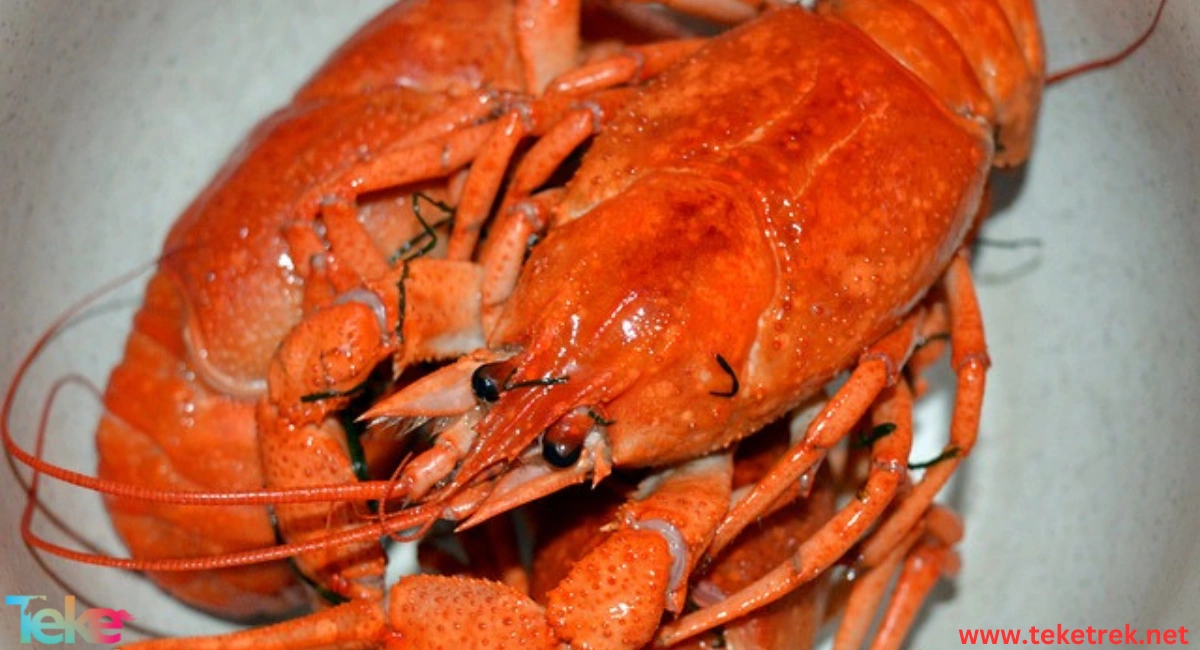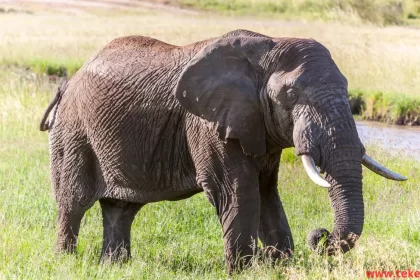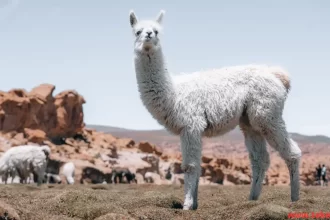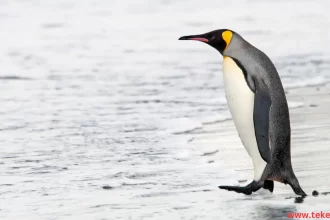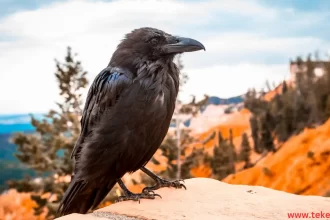The crayfish, also known as lobster, is a type of large marine crustacean, and one of the most famous marine creatures used in seafood cooking. It is characterized by its closed body covered with a hard shell for protection, six small legs, two claws, and a strong, long tail. Lobster meat is considered delicious with a rich flavor, and it is used in preparing a variety of luxurious dishes. Lobsters are found in deep and cold waters in most oceans and are primarily harvested for food and economic purposes.
They encompass a wide range of interesting species. In this article in TekeTrek website, we’ll take a closer look at this organism, its lifestyle, diet, and some of its most important species.

Overview of the Crayfish
- The crayfish is a type of marine crustacean belonging to the family Nephropidae and the order Decapoda, referring to its ten legs arranged in five pairs.
- It is characterized by its tough outer body encased in a shell composed of several sections, including the head, thorax, abdomen, and tail.
- Crayfish are distinguished by their strong claws used for defense and obtaining food, as well as two long antennae on their heads used for maneuvering and sensing.
- Crayfish feed on a variety of small marine organisms and marine plants. They are considered a rich source of protein and other nutrients.
- It is interesting to note that most lobsters use their right hand, with approximately 90% of individuals having a dominant right claw.
- Lobsters exhibit significant diversity in their habitats, appearance, and behaviors. They can be found in a variety of environments, ranging from the depths of the ocean to coastal areas, and they may choose to live either solitary lives or in social groups.
- Lobsters are ectothermic creatures, meaning they can regulate their body temperature according to the surrounding environment.
- They are typically more active in warm waters, where their metabolism increases compared to cold environments. This ability to regulate body temperature based on their location is an excellent adaptation for these marine crustaceans.
Appearance of the Lobster
The lobster is characterized by its unique and distinctive external appearance, consisting of several main parts:
- Head: It features compound eyes and a solid front that protects the mouth and auditory organs.
- Thorax: It consists of several convex sections extending backward, each equipped with sharp claws used by the lobster for self-defense and obtaining food.
- Abdomen: It is characterized by a solid shell that protects the lobster’s internal organs.
- Tail: It has a long, tapering body ending in a fin that helps the lobster swim.
- Lobsters are known for their diverse colors, ranging from red and blue to green and brown, with their color naturally changing when cooked.
- Lobsters have large claws used for self-defense and catching prey, as well as small legs used for movement on land and daily activities.
- The mouthparts of the lobster are particularly interesting; lobsters use the upper jaw for cleaning and storing food, while the lower jaw is used for chewing.
- Under the lobster’s shell, there is a series of gills that allow the animal to breathe. When water flows over the gills, oxygen is extracted and then sent to other parts of the body through the blood.
- Lobster blood is also very interesting and has no color in reality. However, when exposed to oxygen, it takes on a blue color.
- Antennae: One of the most amazing things about lobster antennae is that they are independent, meaning they regrow after being removed. This usually happens when a predator grabs the lobster and its antennae fall off, allowing it to escape relatively unharmed.
- The antennae are located on the head and are used by the lobster largely as sensory aids, allowing it to sense its way around the ocean and “smell” its prey.
Molting in Lobsters
- The external structure of lobsters does not grow with the rest of their bodies. This means that lobsters must undergo regular molting to shed their current external structure and grow a new, larger one.
- This process is most common in younger lobsters that have not yet reached their full size, and as they age, molting decreases in frequency.
- During the most active growth stages, young lobsters may shed their external structure every few weeks.
- During the molting period, lobsters often eat their old shells to regain some of the calcium they have lost, which helps accelerate the hardening process.
- To do this, lobsters must also shed the lining of their digestive system, in addition to absorbing minerals from the environment. In general, the hardening process can take between 14 to 30 days.
- Molting occurs when the lobster becomes too large for its current external structure, but it can delay the process by releasing hormones from glands located in the stalks of its eyes.
Reproduction and Life Cycle
- Lobsters have a complex reproductive system, where females can retain sperm for up to two years.
- They may have up to 75,000 eggs inside their bodies, which they can fertilize when conditions are optimal.
- Male lobsters have special, more rigid, and bony swimmers than those found in females. These allow him to transfer sperm to his mate.
Lobster Age
- The age of the lobster depends on several factors such as the type of lobster, environmental conditions, and nutritional levels.
- On average, lobsters can live between 5 and 20 years, but longevity is often associated with older and more mature individuals. An adult lobster weighing about 1-2 pounds (0.45-0.9 kilograms) is usually in the middle of its life span, while larger lobsters can reach a greater age.
Dietary Habits of Lobsters
- crayfish are carnivorous animals, typically hunting marine crustaceans such as mollusks, crabs, small fish, and occasionally even human flesh. However, this behavior is not common and is usually seen when younger lobsters are more vulnerable to danger.
- Before reaching maturity, lobsters are simply not large enough to capture and consume prey as their parents do. Therefore, they feed on plankton, utilizing appendages that allow them to capture it. These plankton contain enough nutrients to assist in the rapid growth of young lobsters.
- When fishing for fish, lobsters use their cutting claw to access and capture their meal. This claw also allows them to tear the flesh into manageable pieces.
Some Types of Lobsters and Their Locations
American Lobster:
- The American lobster is one of the most famous types of lobsters and is found along the Atlantic coast of North America. It has large claws with a red to orange underside. This species feeds at night, searching for and capturing live prey.
European Lobster:
- The European lobster primarily inhabits the eastern Atlantic Ocean, the Black Sea, and the Mediterranean Sea. It bears similarities to the American lobster in many aspects, but one way to distinguish them is that the European lobster has a white underside to its claw.
Norwegian Lobster (also known as Langoustine or Dublin Bay Prawn):
- The Norwegian lobster is one of the most important commercial shellfish in Europe. It is found in northern oceans, including the North Sea and northeastern Atlantic Ocean. The Norwegian lobster prefers muddy seabeds where it can burrow into sediments during the day. At night, it emerges to search for crustaceans and mollusks and can live at depths of up to 800 meters.
Spiny Lobster:
- Spiny lobsters are found in warm waters throughout the world, including the Caribbean Sea, the Mediterranean Sea, and the Pacific Ocean. Unlike true lobsters, spiny lobsters do not have large claws but instead possess long, spiny antennae and a spiny carapace.

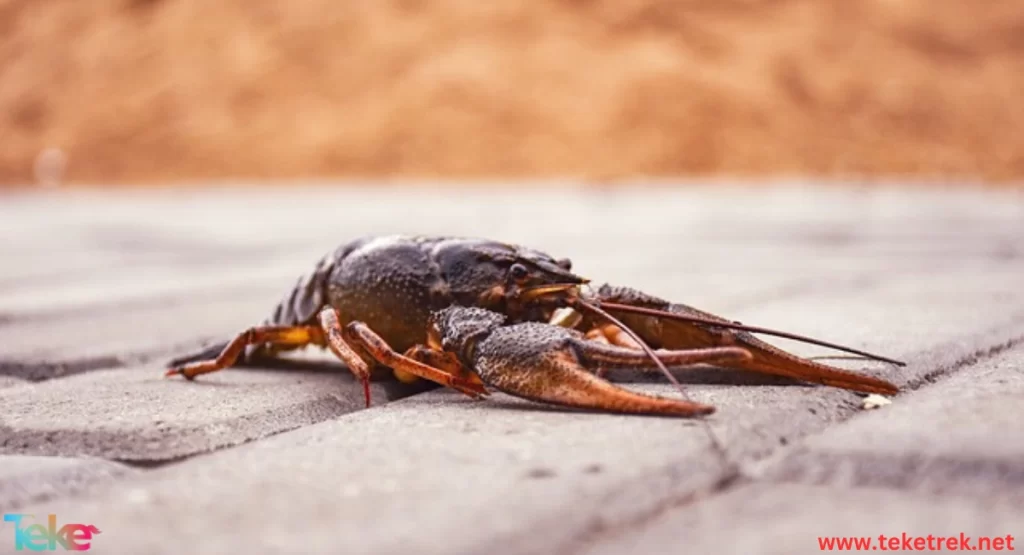
FAQ
- What does the word “Karkand” mean?
The word “Karkand” generally refers to any type of marine crustaceans, often used to refer to lobsters and other long-tailed crustaceans.
- Is Karkand the same as “Istakoza”?
Yes, in some cultures, “Karkand” is referred to as “Istakoza,” a term used in many languages to denote certain types of marine crustaceans such as lobsters and long-tailed crustaceans.
- What does Karkand eat?
Karkand feeds on mollusks, crabs, small fish, and other crustaceans in the marine environment.
- How long does Karkand live?
On average, Karkand can live for about 5 to 20 years.
- Do lobsters eat lobsters?
Yes, lobsters can and do eat other lobsters, particularly smaller or weaker ones. This behavior, known as cannibalism, occurs more frequently among lobsters when they are kept in captivity or crowded conditions, where competition for resources is high.
- Do lobsters live in Europe?
Yes, lobsters can be found in European waters. They are native to the northeastern Atlantic Ocean, including regions around Europe such as the North Sea, the Baltic Sea, and the northeastern Atlantic coast.
- Are lobsters good for you?
Yes, lobsters can be a nutritious part of a balanced diet. They are a good source of lean protein and provide essential nutrients such as vitamins B12 and B6, as well as minerals like zinc, magnesium, and potassium.
- How old is the oldest lobster ever found?
The oldest recorded lobster was estimated to be around 140 years old.

